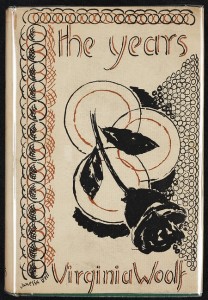 I can’t see Virginia Woolf’s last novel clearly, I know—it’s the novel that made my own first novel possible, the novel that saved my life. Many critics feel it’s not up to her greatest, Mrs. Dalloway and To the Lighthouse (some, in fact, deem it her worst), and even her beloved Leonard thought it too long.
I can’t see Virginia Woolf’s last novel clearly, I know—it’s the novel that made my own first novel possible, the novel that saved my life. Many critics feel it’s not up to her greatest, Mrs. Dalloway and To the Lighthouse (some, in fact, deem it her worst), and even her beloved Leonard thought it too long.
But for me, The Years was transformative, the key to understanding what a novel could be and what (beyond the standard, plot-driven model with a single arc of action leading to a neat resolution) it might do. The Years taught me that a novel might skip lightly over and through time, shining dazzling beams only on selected incidents and using these to illuminate entire lives. It taught me that a novel might vibrate with history, without actually trudging through it and conveying unfelt facts; that it might suggest—through rhythm, repetition, image, and sound—characters’ emotions and experience, rather than describing every event.
My first published novel, Lucid Stars, leans heavily on the structure of The Years. Only later, alas, did I begin to learn some of Woolf’s other vital lessons. I still continue to learn from the novel, especially as I delve into the layers of her massive revisions and restructurings. It’s a brilliant and instructive book, and if it does have flaws, they arise only from Woolf’s great ambition and deep originality.


